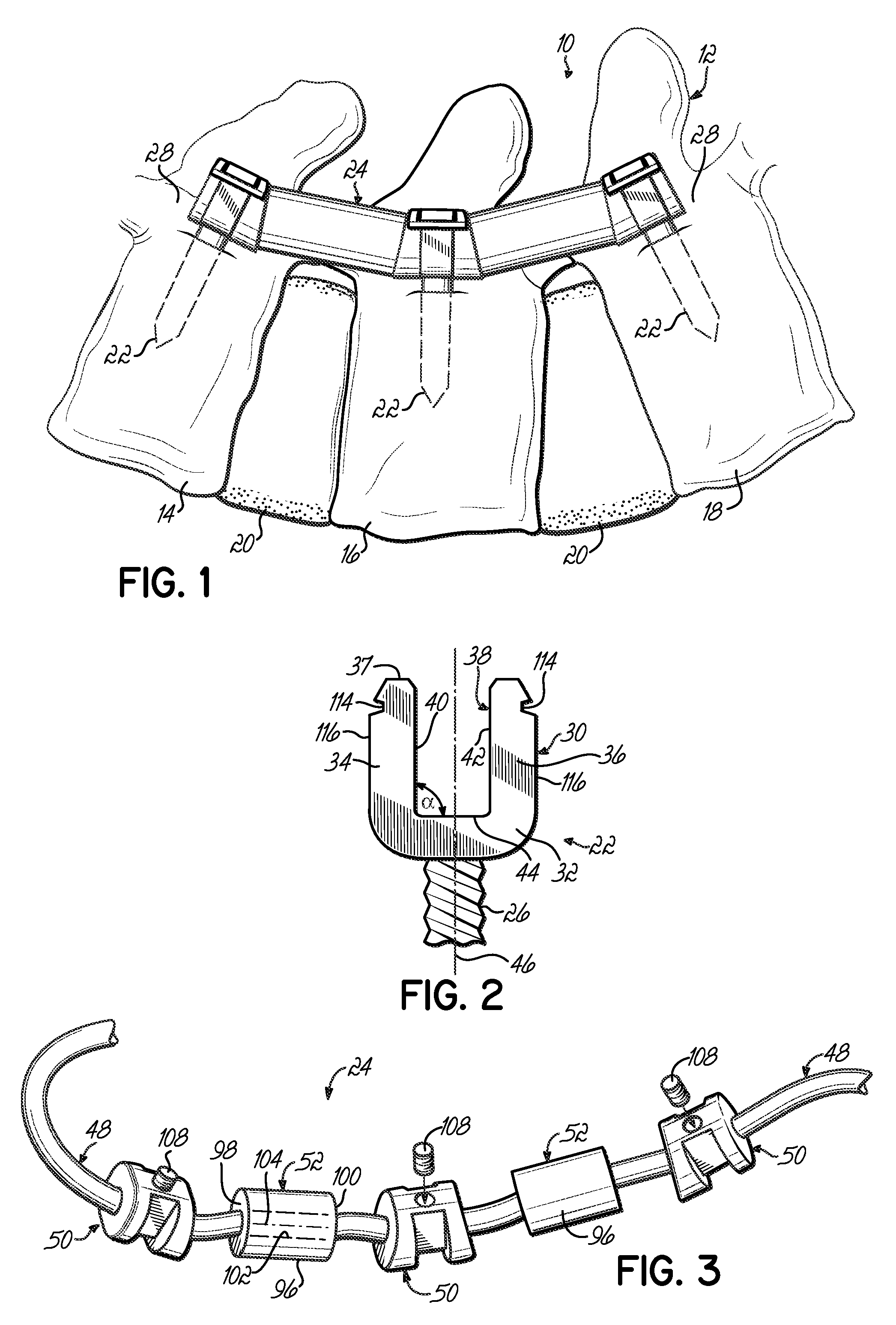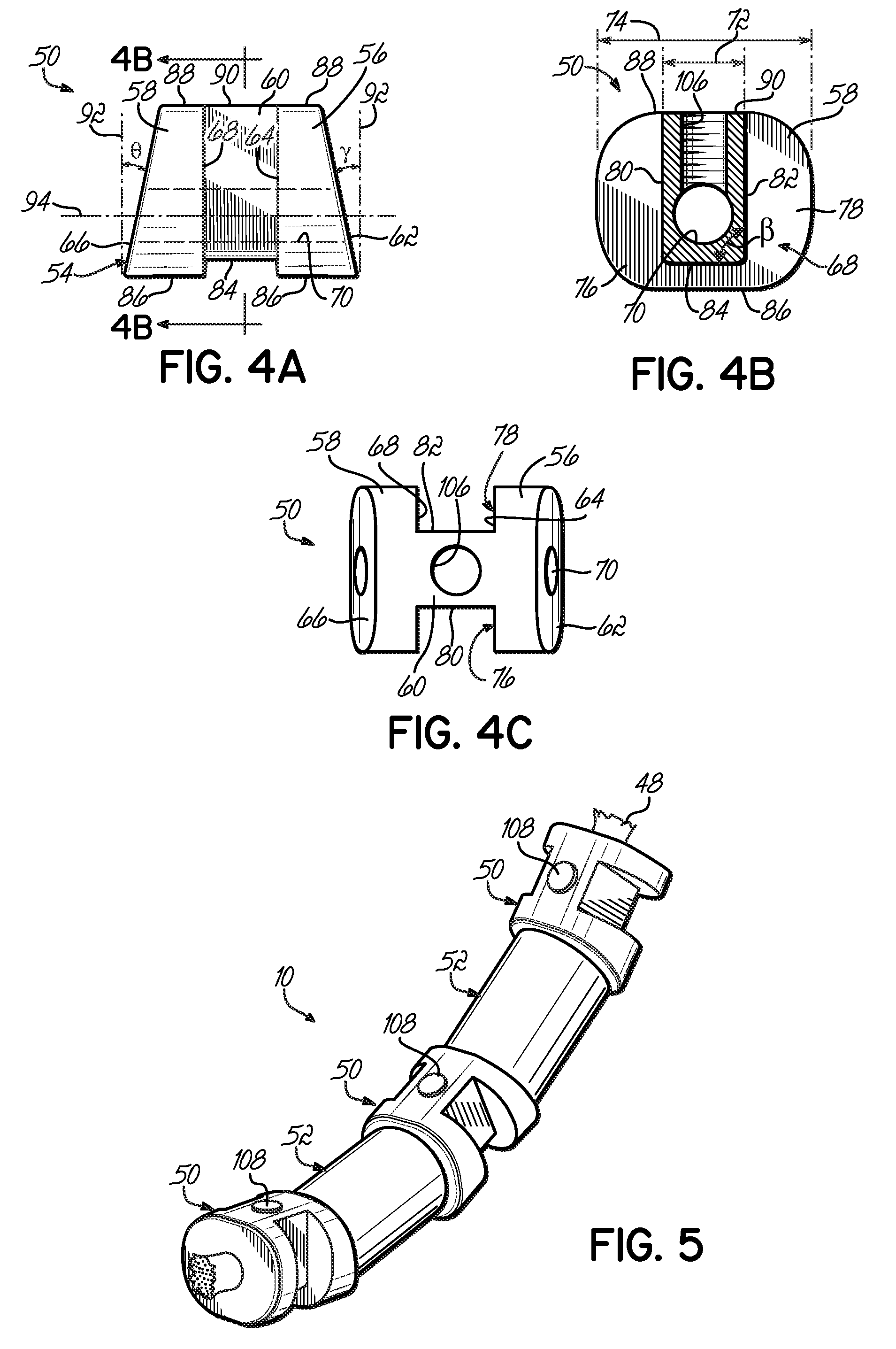Dynamic spinal stabilization system and method of using the same
a spinal stabilization and dynamic technology, applied in the field of spinal support devices, can solve the problems of limiting the range of motion of the spine, affecting the function of the spine, and affecting the patient's recovery, so as to achieve the effect of stabilizing the spine and stabilizing the spin
- Summary
- Abstract
- Description
- Claims
- Application Information
AI Technical Summary
Benefits of technology
Problems solved by technology
Method used
Image
Examples
Embodiment Construction
[0029]Referring now to the drawings, and to FIG. 1 in particular, a spinal stabilization system 10 is shown implanted into a segment of a spine 12 defined by serially positioned spinal elements in the form of adjacent vertebrae 14, 16, 18 that are separated by discs 20. The stabilization system 10 includes anchors 22 installed in vertebrae 14, 16, 18 and a flexible assembly 24 coupled to and extending between the anchors 22 to control abnormal motion of the spine 12, while otherwise leaving the spinal segment mobile.
[0030]FIG. 2 illustrates an exemplary embodiment of an anchor used in the spinal stabilization system 10 in more detail. As shown in this figure, each anchor 22 may be configured as a pedicle bone screw having a threaded portion 26 adapted to facilitate coupling between the anchor 22 and the pedicle 28 (FIG. 1) of the vertebrae 14, 16, 18 and a head portion 30 adapted to couple to the flexible assembly 24. While pedicle screws are shown and described herein, those of ord...
PUM
 Login to View More
Login to View More Abstract
Description
Claims
Application Information
 Login to View More
Login to View More - R&D
- Intellectual Property
- Life Sciences
- Materials
- Tech Scout
- Unparalleled Data Quality
- Higher Quality Content
- 60% Fewer Hallucinations
Browse by: Latest US Patents, China's latest patents, Technical Efficacy Thesaurus, Application Domain, Technology Topic, Popular Technical Reports.
© 2025 PatSnap. All rights reserved.Legal|Privacy policy|Modern Slavery Act Transparency Statement|Sitemap|About US| Contact US: help@patsnap.com



